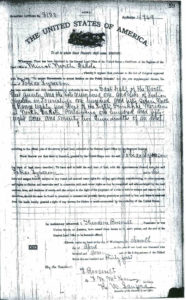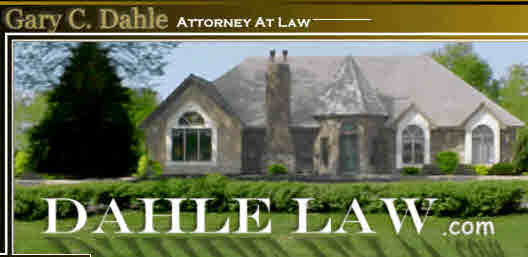North Dakota Transfer on Death Deeds Homestead Rights.

North Dakota Transfer on Death Deeds Homestead Rights
When Both Spouses Must Sign North Dakota Transfer on Death Deeds
N.D.C.C. 47-18-05 identifies the general rule – identifying North Dakota Transfer on Death Deeds Homestead Rights – that:
The homestead of a married person,
without regard to the value thereof,
cannot be conveyed or encumbered unless
the instrument by which it is conveyed or encumbered is
- executed and
- acknowledged
by both the husband and wife.
Both judicial case law, and the North Dakota State Bar Association’s Title Standards, identify that:
- a separate – but otherwise identical deed – executed and acknowledged by a second spouse who did not execute and acknowledge the same document executed and acknowledged by the first spouse,
- does not satisfy the execution and acknowledgment requirements of D.C.C. 47-18-05.
Therefore, both spouses must execute and acknowledge the same document when a homestead is being conveyed by a North Dakota Transfer on Death Deed, in order to protect North Dakota Transfer on Death Deeds Homestead Rights.
North Dakota Homestead – Defined
N.D.C.C. 47-18-01 defines the term “homestead“, as follows:
The homestead of any individual, whether married or unmarried, residing in this state consists of
- the land upon which the claimant resides, and
- the dwelling house on that land in which the homestead claimant resides, with all its appurtenances, and all other improvements on the land,
the total not to exceed one hundred thousand dollars in value, over and above liens or encumbrances or both.
While North Dakota mineral rights constitute real estate interests, they are not considered to be land – which is otherwise identified as surface rights.
North Dakota Transfer on Death Deeds Homestead Rights – Presumption
The general presumption is that any conveyance of North Dakota surface rights involves the homestead.
Therefore, both spouses must sign any deed of conveyance with respect to:
- North Dakota surface rights, or
- North Dakota surface rights being conveyed with mineral rights,
including any North Dakota transfer on death deed which contemplates the conveyance of such rights upon the death of the transferor, in order to protect North Dakota Transfer on Death Deeds Homestead Rights.
North Dakota Transfer on Death Deeds Homestead – Reservation of Surface Rights
Due in part to the exploration rights of the holder of North Dakota mineral rights to occupy that part of the surface necessary for purposes of extracting the minerals:
- both spouses must sign any conveyance of North Dakota mineral rights – including any North Dakota transfer on death deed, made with respect to North Dakota mineral rights,
- where either spouse retains any North Dakota surface rights.
North Dakota Transfer on Death Deeds Homestead Rights – Required Parties
The parties who are required to execute and acknowledge a North Dakota transfer on death deed as the transferor include the following persons:
- A single person;
- Both married persons – either or both of whom had ownership interests in any North Dakota surface rights;
- An individual owner of North Dakota mineral rights who is married – if:
- the property interest identified in the North Dakota transfer on death deed is comprised of mineral rights, and
- the individual owner or spouse has not retained any North Dakota surface rights in the property;
- Both married persons – only one of whom had individual ownership interests in North Dakota mineral rights – if:
- the property interest identified in the North Dakota transfer on death deed is comprised of mineral rights, and
- there are any retained North Dakota surface rights;
- All of the joint tenants – without the signatures of their spouses, if the property interest identified in the North Dakota transfer on death deed is comprised exclusively of mineral rights, and none of the joint tenants or their spouses have retained any surface rights.
- All of the joint tenants – and their spouses, if the property interest identified in the North Dakota transfer on death deed is comprised of:
- surface rights, or
- mineral rights, and there are any retained North Dakota surface rights in the property.
North Dakota Transfer on Death Deed – Tenants-in-Common
If a North Dakota transfer on death deed is to be executed by a tenant in common, it may be advisable to have each tenant in common execute a separate transfer on death deed in order to satisfy the requirement that a transferor be an individual.
Conclusion;
North Dakota Transfer on Death Deeds Homestead Rights
Owners of North Dakota real property interests – including mineral rights – who are contemplating transferring such interests pursuant to a North Dakota Transfer on Death Deed are invited to contact Minnesota and North Dakota attorney Gary C. Dahle for assistance.
Attorneys not licensed in Minnesota or North Dakota are invited to refer possible Minnesota or North Dakota Transfer on Death Deed issues to Minnesota and North Dakota attorney Gary C. Dahle, at 763-780-8390, or [email protected].
For information on ancillary probate in North Dakota, see also http://www.dahlelawnorthdakota.com/north-dakota-probate/ancillary-probate/
Topics of Interest:
- Contact – North Dakota Real Estate Lawyer
- North Dakota Transfer on Death Deed
- North Dakota Transfer on Death Deeds – Avoiding Probate in North Dakota
- North Dakota Transfer on Death Deeds Defined
- Revocation of North Dakota Transfer on Death Deeds
Copyright 2016 – All Rights Reserved
Gary C. Dahle – Attorney at Law
2704 Mounds View Blvd., Mounds View, MN 55112
Phone: 763-780-8390 Fax: 763-780-1735 [email protected]
Legal Disclaimer
Information provided herein is only for general informational and educational purposes. North Dakota’s version of the Uniform Real Property Transfer on Death Act involves many complex legal issues. If you have a specific legal problem about which you are seeking advice, consult with a North Dakota attorney of your choice. Gary C. Dahle, Attorney at Law, is licensed to practice law only in the State of North Dakota, and in the State of Minnesota, in the United States of America. Therefore, only those persons interested in matters governed by the laws of the State of North Dakota and Minnesota should consult with, or provide information to, Gary C. Dahle, Attorney at Law, or take note of information provided herein.
Accessing the web sites of Gary C. Dahle, Attorney at Law – http://www.dahlelaw.com, https://northdakotatransferondeathdeeds.com, or http://www.dahlelawnorthdakota.com – may be held to be requests for information. However, the mere act of either providing information to Gary C. Dahle, Attorney at Law, or taking note of information provided on http://www.dahlelaw.com, https://northdakotatransferondeathdeeds.com, or http://www.dahlelawnorthdakota.com – does not constitute legal advice, or establish an attorney/client relationship.
Nothing herein will be deemed to be the practice of law or the provision of legal advice. Clients are accepted by Gary C. Dahle, Attorney at Law, only after preliminary personal communications with him, and subject to mutual agreement on terms of representation. If you are not a current client of Gary C. Dahle, Attorney at Law, please do not use the e-mail links or forms to communicate confidential information which you wish to be protected by the attorney-client privilege.
Please use caution in communicating over the Internet. The Internet is not a secure environment and confidential information sent by e-mail may be at risk. Gary C. Dahle, Attorney at Law, provides the http://www.dahlelaw.com, https://northdakotatransferondeathdeeds.com, and http://www.dahlelawnorthdakota.com web sites and their content on an “as is” basis, and makes no representations or warranties concerning site content or function, including but not limited to any warranty of accuracy, or completeness.
